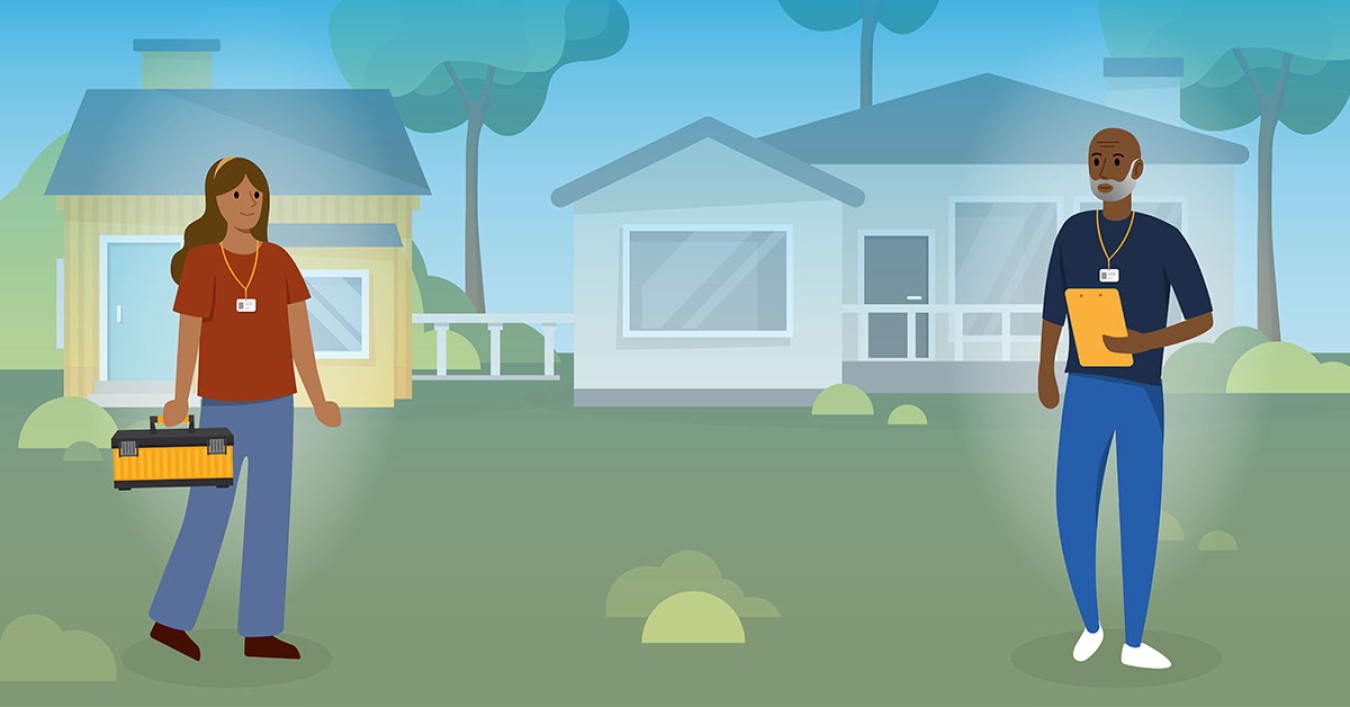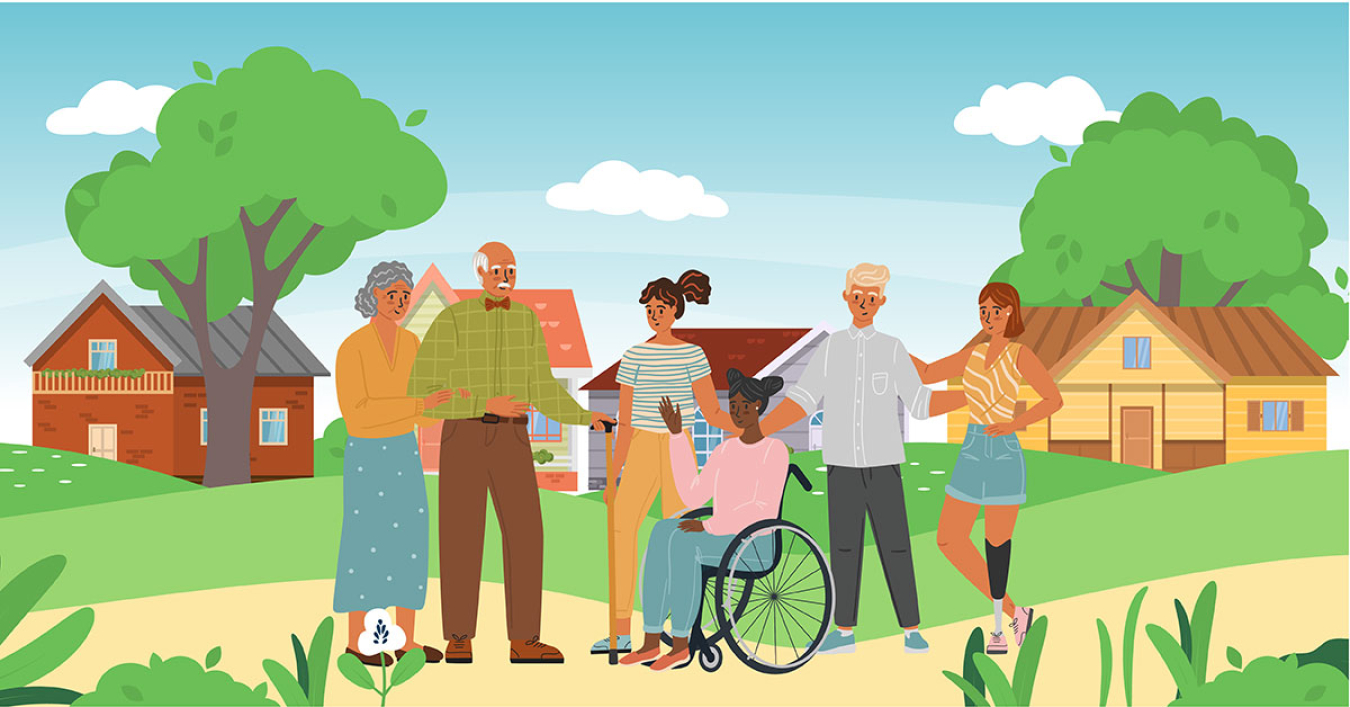Since 2015, California has received $67.8 million from the Weatherization Assistance Program (WAP) and $29.8 million from the State Energy Program (SEP), resulting in the following benefits:

6,713 Homes Weatherized
California reduced energy costs and improved health and safety in 6,713 homes.*

2,385 Jobs Created or Retained
The State Energy Program creates or retains one job for every $12,500 invested.*

Connected with 11,988 People About Energy Efficiency Installations
California held 1,070 workshops, webinars, trainings, or outreach events since 2015.*
* Findings from a National Evaluation of the State Energy Program and a National Evaluation of the Weatherization Assistance Program.
States report outcomes of State Energy Program and Weatherization Assistance Program formula (annual) fund activities to DOE on a quarterly basis. The metrics above are outcomes of formula-funded activities since 2015.
The SCEP Project Map highlights the annual formula and competitive funding for WAP and SEP.
California's State Energy Program at Work
Appliance Efficiency Program
California uses SEP funds to support its Appliance Efficiency Program. Recent appliance efficiency regulations that were adopted or became effective in 2022 and 2023:
- Commercial and Industrial Fans and Blowers (Adopted November 16, 2022)
- Air Filters (Adopted January 17, 2023)
The Commercial and Industrial Fans and Blowers regulations are estimated to save 1700 gigawatt-hours (GWh) per year, and $303 million annually in utility bill savings. The Air Filters regulations are estimated to save 38 gigawatt-hours (Wh) per year and 6.1 million therms per year, and $8.26 billion in annual savings.
Building Energy Efficiency Standards Program
California uses SEP funds to support its nation-leading Building Energy Efficiency Standards Program. On August 11, 2021, the California Energy Commission (CEC) adopted the 2022 Building Energy Efficiency Standards (also called the CA Energy Code) for newly constructed and renovated buildings that will produce benefits to support the state's public health, climate, and clean energy goals. The 2022 update went into effect on January 1, 2023, and is expected to provide the state with $1.5B dollars of environmental benefit.
Concurrently, the CEC is already planning for the next update to the CA Energy Code. The 2025 CA Energy Code is in the process of assessing ways to further encourage electric heat pump technologies, solar photovoltaics, and battery storage. The latest CA Energy Code is expected to advance building decarbonization, further reduce energy expenses in the state, and help homes and businesses protect against extreme heat.
As the state's primary energy policy and planning agency, the CEC adopts standards every three years to cost-effectively increase energy efficiency and lower the carbon footprint of buildings. Homes and businesses use nearly 70 percent of California's electricity and are responsible for a quarter of the state's greenhouse gas (GHG) emissions.
Learn more about SEP competitively awarded projects.
California's Weatherization Assistance Program at Work
The California Department of Community Services & Development is the managing agency for California's Weatherization Assistance Program. The California WAP contracts with local community action agencies and nonprofits to install weatherization improvements in low-income households throughout the state.
Between 2010 and 2022, California weatherized an average of 1,409 homes per year with formula funds.
Success Stories
Read other SCEP News and Success Stories.
California Takes Initiative
Better Buildings Initiative
More than 900 organizations are involved in the Better Buildings Initiative working to reduce energy and water waste and modernize the nation’s buildings and industrial facilities. Download the 2023 Better Buildings Progress Report for more information on the Initiative as a whole.
Better Buildings Challenge Partners
The cities of Chula Vista, Los Angeles, and San Diego; Placer County; the San Francisco Unified School District; and the Los Angeles Unified School District have taken on the Better Buildings Challenge, a commitment to reduce the energy use of their entire building portfolios by 20% within 10 years and are making progress toward their energy reduction goals. As of 2021, public-sector Challenge partners have cumulatively saved 133 trillion Btus of energy, $1.27 billion, and 1.5 billion gallons of water since the Challenge was launched in 2011.
Better Climate Challenge
The U.S. Department of Energy (DOE) is challenging organizations to set ambitious, portfolio-wide GHG emission reduction goals. This new effort provides additional opportunities for peer exchange and technical assistance to meet the urgent call to mitigate the impacts of climate change.
The cities of Chula Vista and San Diego, and the Los Angeles Unified School District have joined the Better Climate Challenge, a commitment to reduce their portfolio-wide scope 1 and 2 GHG emissions by at least 50% within 10 years. They will pursue an energy efficiency target as part of this commitment, recognizing efficiency as a key driver of decarbonization.
Better Buildings Accelerators
In the past five years, SCEP has engaged nearly 100 partners in Better Buildings Accelerators. These Accelerators are designed to demonstrate specific innovative policies and approaches, which will accelerate investment in energy efficiency upon successful demonstration. Each Accelerator is a targeted, short-term, partner-focused activity designed to address persistent barriers that stand in the way of greater efficiency.
To learn more about other Better Buildings partners and solutions in the state of California and other states involved in the Better Buildings Initiative, check out the Better Buildings Partner map.
Outdoor Lighting Accelerator Partners
The cities of San Diego, Los Angeles, and Huntington Beach; California Street Light Association; and Southern California Regional Energy Network, partners in the Outdoor Lighting Accelerator (OLA) from 2014-2016, pledged to upgrade its streetlights as a part of a nationwide commitment to retrofit 1.3 million light poles with high performance lighting. These commitments are expected to result in annual savings of $48 million. See the Outdoor Lighting Toolkit for more information and demonstrated best practices.
Sustainable Wastewater of the Future (SWIFt) Initiative
Los Angeles County committed to improving the energy efficiency of their participating water resource recovery facilities as part of the Sustainable Wastewater Infrastructure of the Future (SWIFt) Initiative Phase 1 from 2016-2019. SWIFt Phase 1 hosted 25 state, regional, and local agencies that engaged with more than 70 water resource recovery facilities in their jurisdictions and successfully reduced their total energy consumption by almost 7%, adopted best-practice energy management approaches showcased in the Wastewater Energy Management Toolkit, and created plans to achieve 30% energy savings.
The cities of Bear Valley, Chino, Oakland, Redwood City, San Leandro, San Luis Obispo, and Temecula, Silicon Valley Clean Water, and East Bay Municipal Utility District committed to improving the energy efficiency of their participating water resource recovery facilities as part of SWIFt Phase 2. SWIFt Phase 2 is engaging wastewater treatment facilities in a voluntarily partnership to achieve 5% short-term and 25% long-term facility-wide energy savings and implement at least one next-generation technology (e.g., renewable energy, resource recovery, and advanced data management).
Publications, Resources, Helpful Links
- State and Local Solution Center, a one-stop shop of impactful public-sector resources
- Weatherization Assistance Program
- State Energy Program
- NASEO State Energy Office Contact
- Contact Weatherization Agency
- EIA California State Profile and Energy Estimates
- Chula Vista Better Buildings Challenge Partner Profile
- Los Angeles Better Buildings Challenge Partner Profile
- Placer County Better Buildings Challenge Partner Profile
- San Diego Better Buildings Challenge Partner Profile
- Los Angeles Unified School District Better Buildings Challenge Partner Profile
- San Francisco Unified School District Better Buildings Challenge Partner Profile
